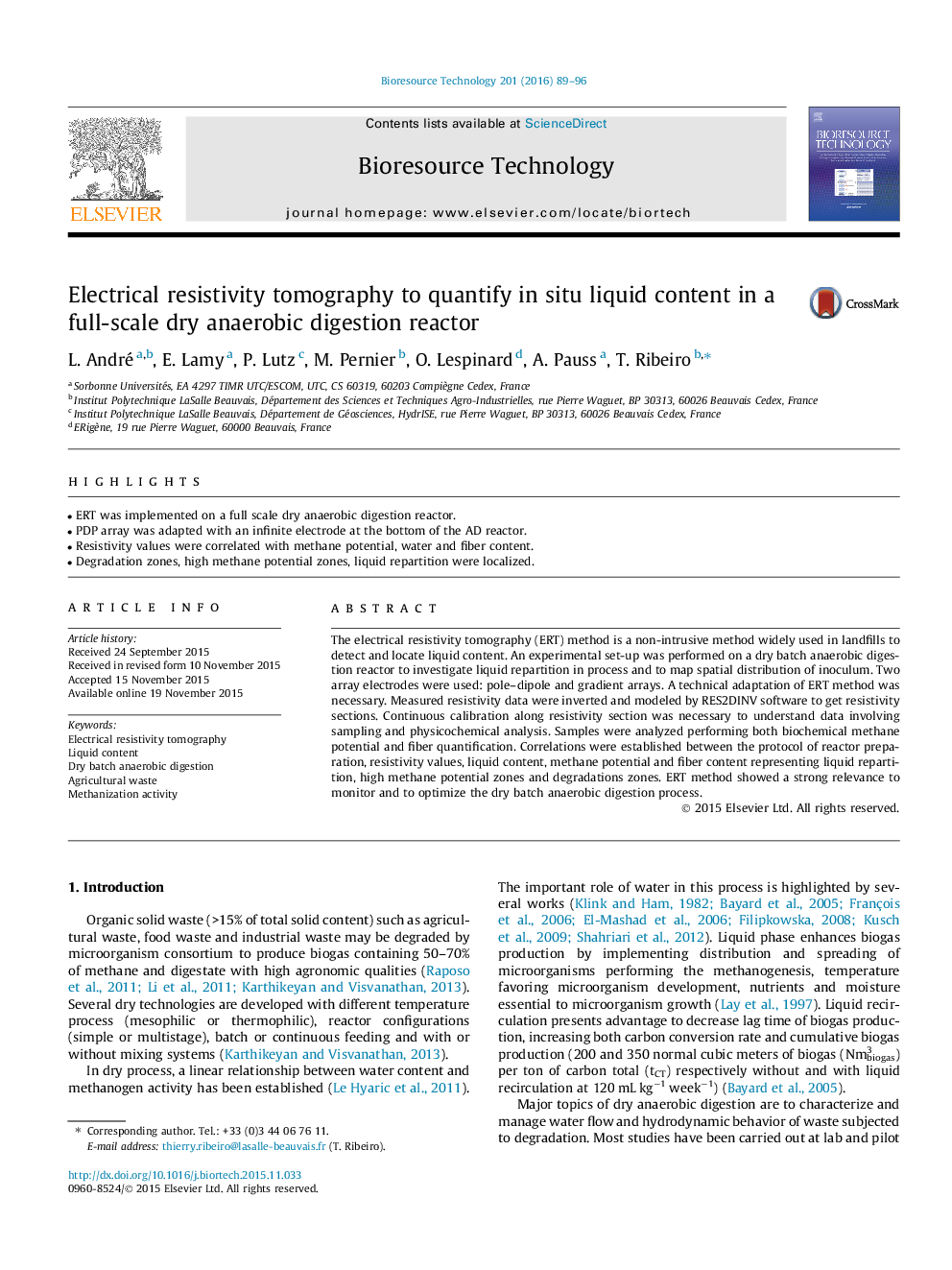| Article ID | Journal | Published Year | Pages | File Type |
|---|---|---|---|---|
| 679360 | Bioresource Technology | 2016 | 8 Pages |
•ERT was implemented on a full scale dry anaerobic digestion reactor.•PDP array was adapted with an infinite electrode at the bottom of the AD reactor.•Resistivity values were correlated with methane potential, water and fiber content.•Degradation zones, high methane potential zones, liquid repartition were localized.
The electrical resistivity tomography (ERT) method is a non-intrusive method widely used in landfills to detect and locate liquid content. An experimental set-up was performed on a dry batch anaerobic digestion reactor to investigate liquid repartition in process and to map spatial distribution of inoculum. Two array electrodes were used: pole–dipole and gradient arrays. A technical adaptation of ERT method was necessary. Measured resistivity data were inverted and modeled by RES2DINV software to get resistivity sections. Continuous calibration along resistivity section was necessary to understand data involving sampling and physicochemical analysis. Samples were analyzed performing both biochemical methane potential and fiber quantification. Correlations were established between the protocol of reactor preparation, resistivity values, liquid content, methane potential and fiber content representing liquid repartition, high methane potential zones and degradations zones. ERT method showed a strong relevance to monitor and to optimize the dry batch anaerobic digestion process.
